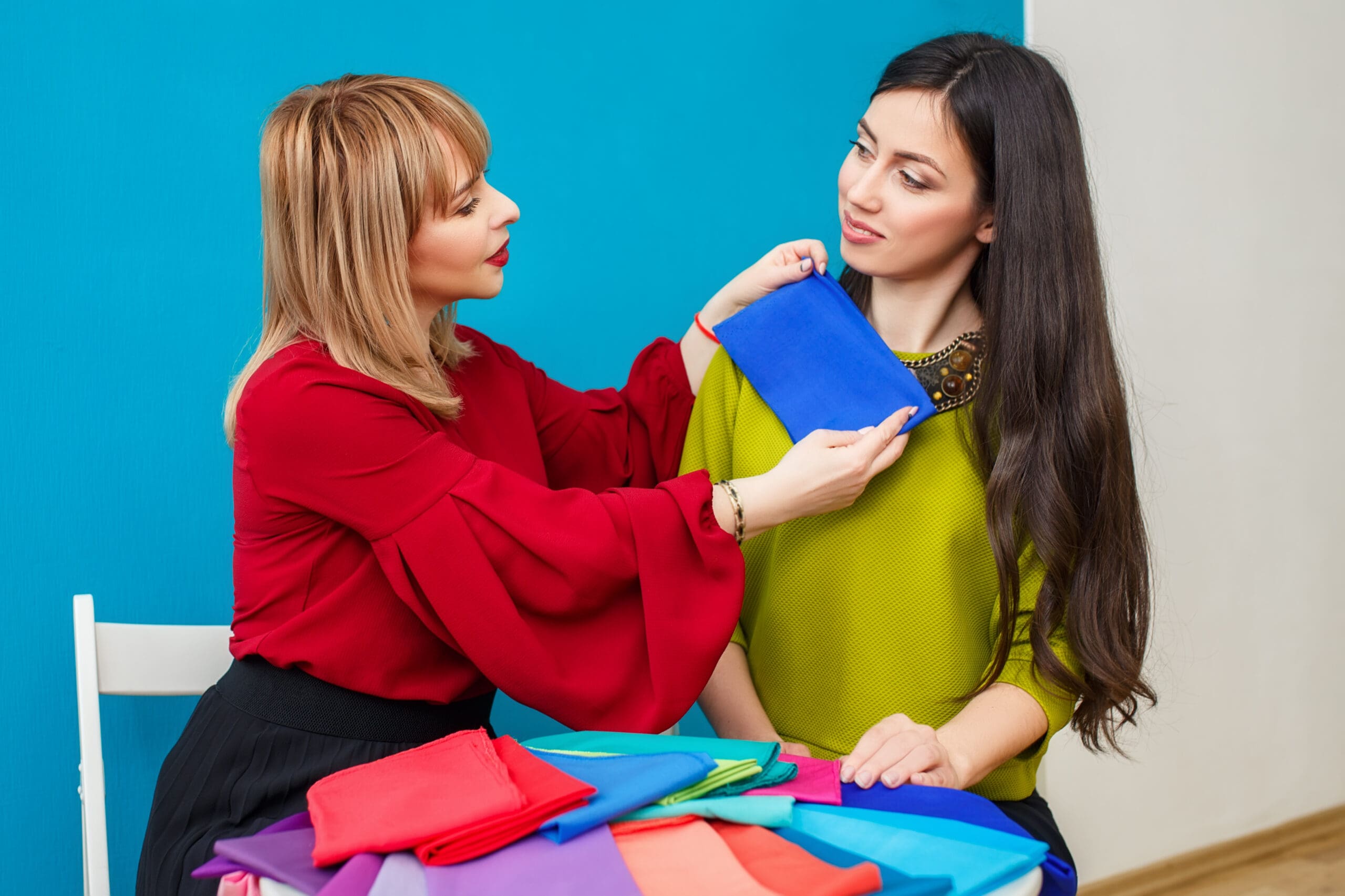At a clothing swap, my friend—a redhead—held a shirt up to her body and said, “This shade of beige makes me look dead.” It was true: her normally bright skin looked washed out and pallid. That’s colour analysis in a nutshell.

This approach of determining a colour palette that complements a person’s skin tone and features isn’t new—but it’s currently trendy. Why the resurgence? It could be product and brand overwhelm. Or social media and regular Zoom calls. Rotem Bar Lev, a stylist and colour analyst in New York, thinks “people are investing in themselves much more. … Fashion is more than just what you wear. It’s really your identity, and how you want to walk in the world.”
Even those unaware of TikTok trends likely have some knowledge of colour analysis. The practice rose to prominence in the 1980s, thanks to Carole Jackson’s book Color Me Beautiful, which was first published in 1973 and spent seven years on the New York Times bestseller list. It fell out of fashion in the ’90s, when other trends took its place—but not before 13 million copies of the book were sold.
“A colour analysis result will give you everything, colour-wise, that is optimal for you to wear, head to toe,” says Carol Brailey, a colour analyst who specializes in virtual appointments. “That includes makeup, hair, clothing, accessories.”
In Jackson’s day there were four distinct seasons: spring, summer, fall, winter. Today, colour analysts often work with 12- and 16-season systems, for more personalized results. “I use the International Image Institute system,” says Brailey. “That can be up to 23 seasons … but it could be more if somebody crosses between seasons.”
There are other approaches as well, such as Japanese and Korean. Yan Jin is the founder of Toronto-based Yan’s Powder Room, where she is an image consultant and colour specialist. Certified in both Korea and Canada, she describes the Korean method as “version three.” Jin explains that the Western approach came first, followed by Japanese, before being adopted—and adapted—in Korea.
Quite often, different disciplines of colour analysis yield different results. “It happens a lot,” Jin says. “Even in Korea, there’s a couple of different styles. To me, it’s all about the person. … This person should stand out. They should be the focus, not the colour.”
At an in-person appointment, the client arrives barefaced with hair pulled back, and is draped with various colour swatches for “a series of comparison between different shades, different deepness, different brightness, to understand your natural features,” says Bar Lev. “It’s actually helped me personally on days I don’t feel so confident, and I see that change in my face. Just with colours, as simple as that.”
Virtual appointments work differently. As Brailey explains, the client submits a suite of photos, some older and others taken specifically for the colour analysis. One of the benefits of analyzing virtually, Brailey explains, is that the analyst can take time with the images to ensure an accurate result—perhaps even more so than in-person. “I’ve met people who have received in-person colour analysis results that are extremely inaccurate,” she says.
Bar Lev does her analysis in person, but agrees virtual results can be spot-on. She has less faith, though, in colour analysis apps. “It’s not an actual [human] eye … it’s AI,” she says. “It’s not someone professional looking at your pictures and understanding different shades.”
Following a colour analysis appointment, what should clients do with their beauty products or the contents of their closets? Bar Lev counsels a moderate approach when deciding what stays or goes. “Everybody asks, ‘So now I need to get rid of all the clothes that I have?’ No.” Instead, colour analysis “allows awareness to come into our thinking process when we go shop.” If hues outside the optimal palette still appeal, keep wearing them.
Brailey has similar advice: “Wear what you love and have fun with it.” But, she adds, hair colour may be the most important result. “You could be framing three sides of your face with a hair colour that isn’t in your colour palette. There’s only so much your clothing can do.”
Jin recommends making time to discuss a particular beauty item. “Lipstick’s always a default in the session, because it’s the hardest product to decide [on],” she says. “Cheek colour is easier. Lip is tricky, because it’s a completely different look in the tube or on yourself.”
Once you’ve decided on that new shade of lipstick, she advises you also “match at least a couple items [in your home], like the sofas, walls, to your colour,” Jin says. “When you’re at home, you don’t wear makeup. So if the surrounding colours match you, you will be more happy.”
Like Jin, Brailey believes in the transformative power of finding your colours: “I’ve seen through colour analysis, and people implementing results, confidence built to the point where it’s changed lives,” she says. “Because when you’re feeling better and sparkly, that’s the vibration you’re giving off.” —Jill von Sprecken

Be the first to comment